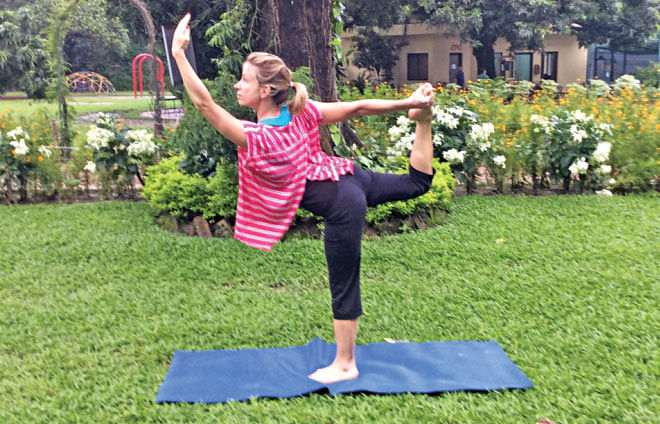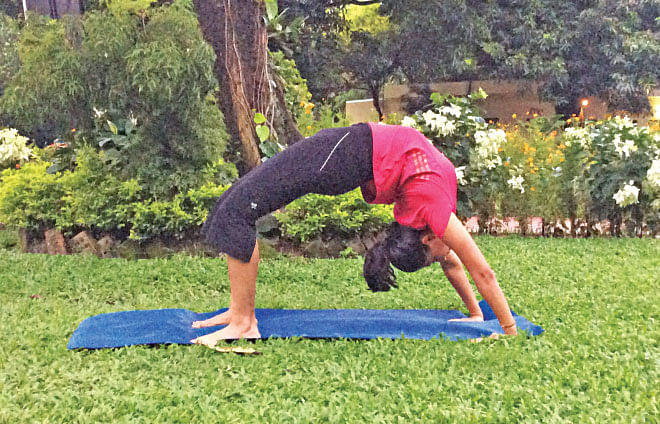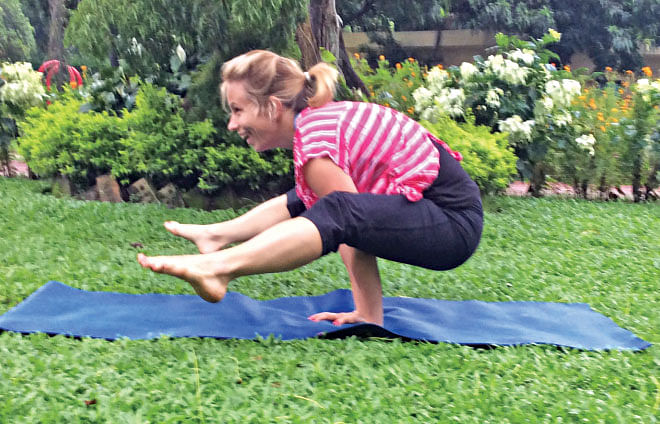Patanjali's yoga philosophy

In his classic work, the Yoga Sutras, legendary sage Patanjali, says the goal of yoga is to bring you total freedom from suffering. To do this, Patanjali elaborated eight branches of yoga (ashtanga). Each component helps you shift your internal reference point from constricted to expanded consciousness. Patanjali is the great voyager of inner space. To remove the veils that hide the deepest layers of your being, Patanjali elaborated the eight branches of yoga.
Yamas
The first limb of ashtanga yoga is the yamas or external (social) restraints. This limb is about ethics and is meant to guide a yogi on and off the mat. The yamas help keep the mind and the energetic flow of the body from being scattered. They help us maintain our equilibrium.
There are five yamas: ahimsa, satya, asteya, brahmacharya and aparigraha. Ahimsa (nonviolence) means not harming others or ourselves. Non-violence also means refraining from harmful thoughts about ourselves or others. This means we can get to know ourselves with an awareness free of limiting self-beliefs.

Satya (honesty) of body, speech and mind includes being honest about our self-image, honest about how we speak with others, honest in our thoughts. Asteya (not stealing) means not taking what is not freely given. It also refers to not stealing space (destroying the environment) or time (impatience).
Brahmacharya (wise use of energy, including sexual energy) means we need to bring awareness to the way that any form of sexual relations should be on the basis of mutual understanding, love and commitment.
Aparigraha (not accumulating things) relates to greedlessness and promotes transformation of self-centered desires. Owning things or accumulating knowledge adds nothing to a life authentically lived.

Niyama
These are rules of personal conduct. They include: shoucha (purity i.e. non-toxic, nourishing choices), santosha (contentment) which emerges when you relinquish your attachment to the need for control, power and approval, tapas (discipline) which includes daily meditation, exercise, healthy food and going to bed early, svadhyana (self study) to know oneself and ishwara (faith, surrender to God).

Asanas
These are the physical postures that help us stay fit and healthy. These postures also cultivate strength and flexibility of the body, mind and spirit. Asana literally means sit. Thus, yoga posture or asana is an opportunity to sit with that which arises from moment to moment with acceptance, patience, steadiness and ease.
Asanas can permeate the entire day, and the entire life, giving us access to a more spacious sense of being. The form of the pose is secondary to what that pose is orienting the mind-body toward – present moment mindfulness.
Posture sequences open up different layers and movements of mind and body and thus work on the sheaths of mind and body in distinct ways. Traditionally posture sequences create balance in the mind-body because postures complement one another and alternate between stretching and stilling the breath.
Pranayama
Prana is vital energy. When prana is flowing freely throughout your body/mind, you will feel healthy and vibrant. When your mind is centred and quiet, so is your breath. When your mind is turbulent, your breathing becomes disordered. When you are tuned into the pranic energy of your body, you spontaneously become more attuned to the relationship between you and your universe. Thus pranayama can take you from a constricted state to an expanded state of awareness.
Pratyahara
This means withdrawing from your senses. This could be an inner space where you are less likely to be distracted by distressing sensations in your environment such as loud music, tv, arguments, etc. so you can bring your awareness to quieter realms of your consciousness.
Dharana
By learning to value your attention as a precious commodity, you will be able to consciously create well-being and success in your life. Once you activate something with your attention, your intentions have a powerful influence on what manifests in your life.
According to yoga, your intentions have infinite organising power. Your intention may be to heal an illness, create more love in your life, or become more aware of your own divinity. Simply by becoming clear about your intentions, you will begin to see them actualise in your life. When your awareness is established in being and you have a clear intention, nature rallies to help you fulfill your deepest desires. Dhyana
Dhyana is the cultivation of your awareness so that in the midst of this unending change, you do not lose yourself in the objects of your experience. You learn to stay centered and awake to all possibilities whenever a challenge arises, so that you are able to choose the best course of action that will maximise the chances that your intentions and desires will be fulfilled.
Samadhi
This is pure, unbounded awareness. Going beyond time and space, beyond past and future, beyond individuality, Samadhi is tasting the realm of eternity and infinity. This is the state of being in which fear and anxiety do not arise. You surrender your need to take yourself too seriously because you recognise that life is a cosmic play and like a great actor you perform your role impeccably but do not lose your real self in the character you are playing.
The goal of yoga -- to know yourself as a spiritual being disguised as a human being, to be established in union and perfect action in harmony with the evolutionary flow of life.
Yogilates classes by Shazia Omar are held on Mon/Wed/Sat at 6pm. To register, email [email protected]; to learn more, visit Facebook/yogilatesindhaka.

 For all latest news, follow The Daily Star's Google News channel.
For all latest news, follow The Daily Star's Google News channel. 



Comments